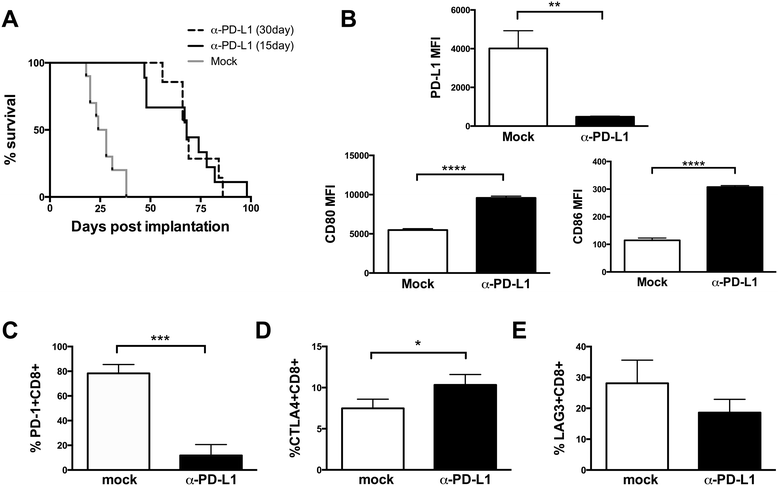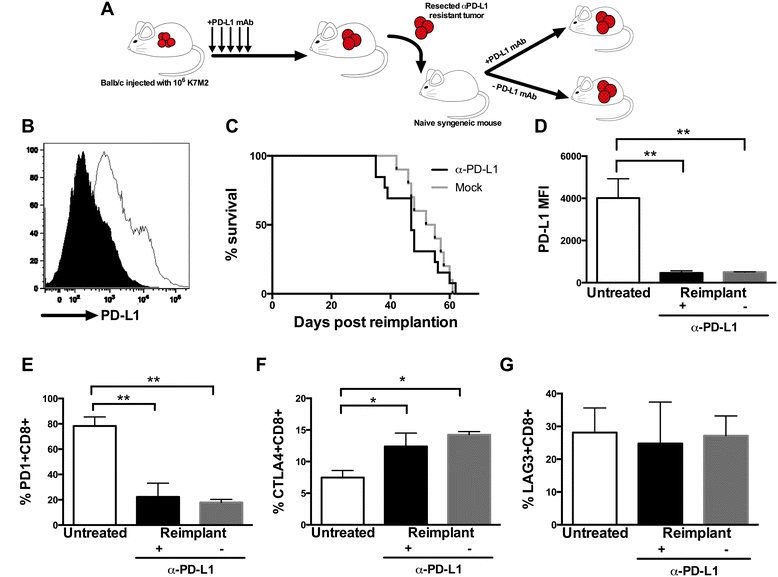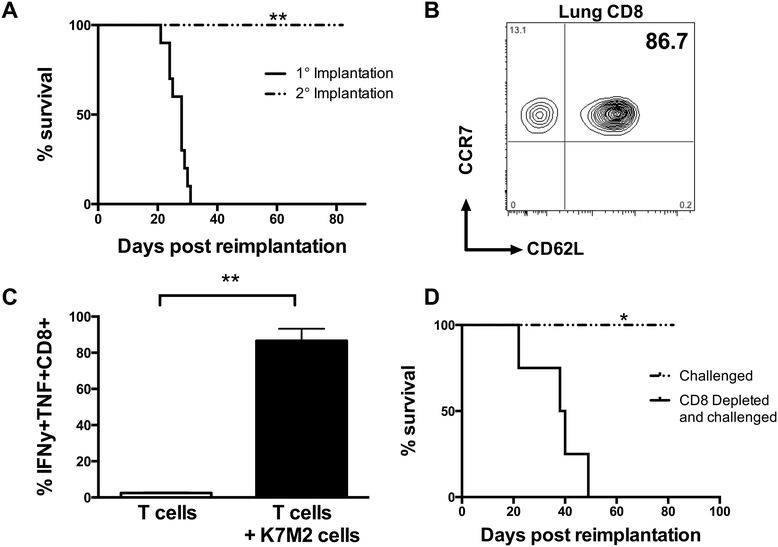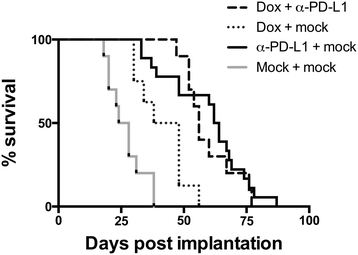Combination immunotherapy with α-CTLA-4 and α-PD-L1 antibody blockade prevents immune escape and leads to complete control of metastatic osteosarcoma
- PMID: 25992292
- PMCID: PMC4437699
- DOI: 10.1186/s40425-015-0067-z
Combination immunotherapy with α-CTLA-4 and α-PD-L1 antibody blockade prevents immune escape and leads to complete control of metastatic osteosarcoma
Abstract
Background: Osteosarcoma is one of the most common bone cancers in children. Most patients with metastatic osteosarcoma die of pulmonary disease and limited curative therapeutic options exist for such patients. We have previously shown that PD-1 limits the efficacy of CTL to mediate immune control of metastatic osteosarcoma in the K7M2 mouse model of pulmonary metastatic disease and that blockade of PD-1/PD-L1 interactions can partially improve survival outcomes by enhancing the function of osteosarcoma-specific CTL. However, PD-1/PD-L1 blockade-treated mice eventually succumb to disease due to selection of PD-L1 mAb-resistant tumor cells. We investigated the mechanism of tumor cell resistance after blockade, and additional combinational therapies to combat resistance.
Methods: We used an implantable model of metastatic osteosarcoma, and evaluated survival using a Log-rank test. Cellular analysis of the tumor was done post-mortem with flow cytometry staining, and evaluated using a T-test to compare treatment groups.
Results: We show here that T cells infiltrating PD-L1 antibody-resistant tumors upregulate additional inhibitory receptors, notably CTLA-4, which impair their ability to mediate tumor rejection. Based on these results we have tested combination immunotherapy with α-CTLA-4 and α-PD-L1 antibody blockade in the K7M2 mouse model of metastatic osteosarcoma and show that this results in complete control of tumors in a majority of mice as well as immunity to further tumor inoculation.
Conclusions: Thus, combinational immunotherapy approaches to block additional inhibitory pathways in patients with metastatic osteosarcoma may provide new strategies to enhance tumor clearance and resistance to disease.
Figures





References
LinkOut - more resources
Full Text Sources
Other Literature Sources
Research Materials
